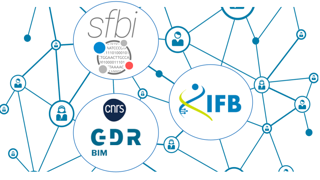Special Session: Bioinformatics in France
 The French bioinformatics community is rich and diverse. It brings together many actors from the academic and industry domains. The \"Bioinformatics in France\" is a ISMB/ECCB2023 special session organized by the SFBI (French Society of Bioinformatics) and it will give a broad view of bioinformatics in France.
The French bioinformatics community is rich and diverse. It brings together many actors from the academic and industry domains. The \"Bioinformatics in France\" is a ISMB/ECCB2023 special session organized by the SFBI (French Society of Bioinformatics) and it will give a broad view of bioinformatics in France.
This afternoon session is open to all ISMB/ECCB attendees. First, the actions and goals of the main French groups in bioinformatics (SFBI, GdR-BIM, IFB-Elixir) will be presented. Then, we will invite you to listen to researchers from our community who will share their latest and most innovative research work. All the session will have that very special “french flavor”.
In order to take the time to exchange, we will continue our discussions during a poster session followed by a French style culinary evening. In addition to its scientific dynamism, we hope to show you how friendly our community is.
All times listed are in CEST
Presentation Overview: Show
Presentation Overview: Show
Presentation Overview: Show
Presentation Overview: Show
Presentation Overview: Show
Presentation Overview: Show
Presentation Overview: Show
Presentation Overview: Show
Presentation Overview: Show
Presentation Overview: Show